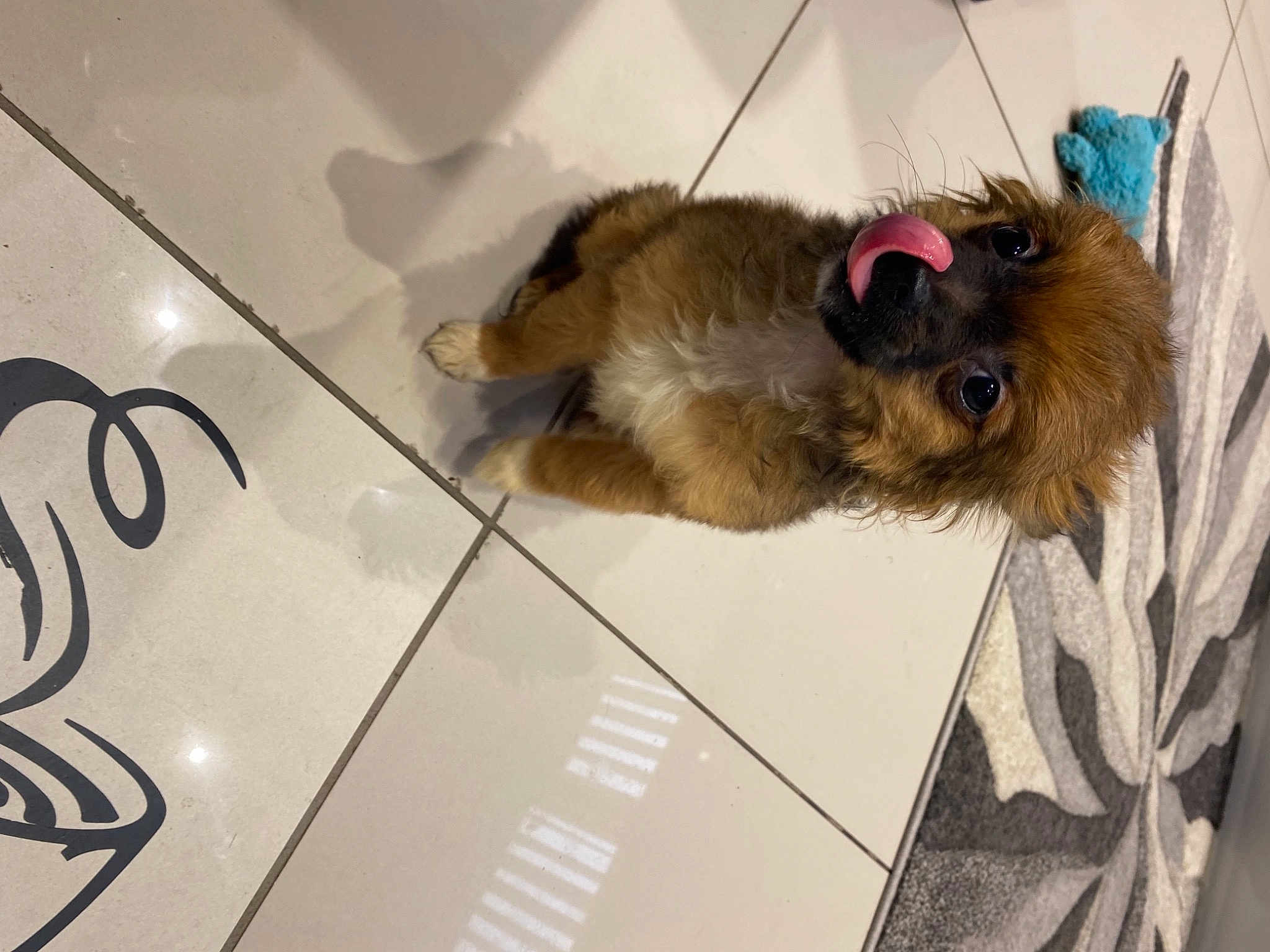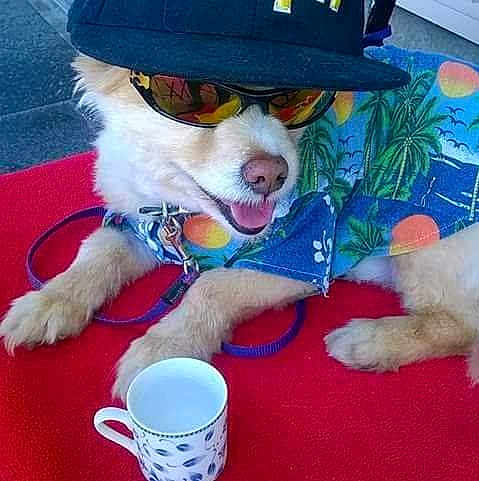“In the uncharted expanses of French forests, the melodic howl of the Porcelaine hound has guided hunters for centuries, showcasing both elegance and tenacity in one remarkable breed.”
Personality and Behavior of the Porcelaine
The Porcelaine, also known as the "Porcelain Hound," exudes a personality that is both refined and driven. Bred originally for hunting, this breed combines a keen sense of smell with an intelligence that makes it adept at tracking game. This hound is known for its spirited and lively demeanor, bringing an enthusiastic energy to its daily activities.
Despite the Porcelaine's historical roots in hunting, it also adapts well to domestic life. This breed is known for being affectionate and gentle with family members, making it an excellent companion for those looking for a loyal pet. Porcelaines tend to form strong bonds with their owners, often displaying loyalty and devotion that is characteristic of hound breeds.
However, due to their hunting instincts, Porcelaines can sometimes exhibit a sense of independence. They often require a firm yet gentle hand in training to ensure they remain obedient and well-behaved. Early socialization is crucial, helping them to interact well with other pets and people.
Porcelaines are also known for their vocal nature. They use their distinctive, melodious howl not only while hunting but also as a means of communication, whether expressing joy, alerting their owners, or simply seeking attention. Understanding and managing this aspect of their behavior is essential for a harmonious household.
"Did you know that the Porcelaine's striking, almost transparent coat is not only a unique visual trait but also serves a functional purpose, aiding hunters in easily spotting them in dense woods?"
Meanings, History, and Origins of the name Porcelaine
The name “Porcelaine” hails from French origins, inspired by the breed's distinctive, glossy white coat that is reminiscent of fine porcelain. This elegant appearance, coupled with the dog’s grace and refined demeanor, makes the name particularly fitting. The term itself speaks to the historical context of the breed, embodying both aesthetic appeal and cultural heritage.
Historically, the Porcelaine breed traces its roots back to the 18th century in France. It was developed primarily for hunting purposes, especially in tracking game like deer and wild boar. This breed is believed to have descended from the now-extinct Montaimboeuf dog, along with influences from various Swiss hounds. The careful selection and breeding processes over the centuries have honed the Porcelaine's specific traits - a powerful sense of smell, endurance, and an unmistakable visual elegance.
The breed’s association with French aristocracy further cements its distinguished reputation. Porcelaines were often the preferred choice of the noble huntsmen due to their efficiency in the hunt and their striking appearance. They symbolized both status and functionality, making them a prized possession.
Despite its noble history, the Porcelaine faced near extinction during the two World Wars. Dedicated enthusiasts and breeders worked tirelessly to revive the breed, ensuring its survival and continued presence in the modern era. This rich history adds to the allure and mystique of the Porcelaine, making it a breed steeped in cultural significance and resilience.
Popularity of the Porcelaine
The Porcelaine, while not as widely recognized as some other breeds, enjoys a steady and devoted following. In its native France, the breed is particularly cherished, known for its historical significance and its continuing role in hunting. French enthusiasts often regard the Porcelaine as a living piece of national heritage, celebrating its unique blend of beauty and utility.
In English-speaking countries, the Porcelaine is gaining a gradual but consistent rise in popularity. Dog lovers who are drawn to the breed's distinctive appearance and amiable nature find it a charming addition to their families. While not as common as breeds like Labradors or Poodles, the Porcelaine is respected within niche circles of hound enthusiasts and is slowly making its presence known at various dog shows and competitions.
Internationally, the Porcelaine has pockets of popularity, particularly in Europe where its hunting abilities are still highly valued. Countries like Belgium, Switzerland, and Italy have seen increasing numbers of breeders and owners who appreciate the breed's elegant aesthetics and practical skills. In recent years, the breed has also caught the eye of dog lovers in the United States and Australia, where its unique characteristics stand out in canine communities.
The advent of social media and global online platforms like KingPet has also contributed to the breed’s exposure. Photos and stories about Porcelaines being shared have piqued the interest of dog enthusiasts worldwide, who admire the breed's graceful appearance and robust personality.
Health and Care of the Porcelaine
Caring for a Porcelaine involves understanding its specific health needs and ensuring that these are met with diligence and love. Generally, Porcelaines are a hardy breed with few breed-specific health issues, but they do require regular check-ups to maintain their overall well-being.
One common health concern for Porcelaine dogs is hip dysplasia, a condition often seen in many medium to large breeds. Regular veterinary visits and maintaining a healthy weight through proper diet and exercise can help manage this issue. Additionally, due to their deep chest, Porcelaines may be prone to bloat, a serious condition that requires immediate attention. Feeding them smaller, more frequent meals rather than a single large portion can mitigate this risk.
The Porcelaine's coat, while low-maintenance, still calls for occasional grooming to keep it in pristine condition. Brushing the coat weekly will suffice to remove loose hairs and maintain its glossy appearance. Regular ear checks are also crucial, as their floppy ears can be prone to infections if not kept clean.
Diet is another essential aspect of care for this active breed. Providing a balanced diet rich in protein and nutrients supports their high energy levels and overall health. It's important to consult with a veterinarian to determine the best food and portion sizes for their specific needs.
Exercise is equally significant for the Porcelaine. Given their hunting lineage, they require ample physical activity to stay happy and healthy. Daily walks, playtime in secure yards, and opportunities to explore different environments keep them mentally and physically stimulated.
Training and Education of the Porcelaine
Training a Porcelaine requires a blend of patience, consistency, and understanding of the breed's innate behaviors. Porcelaines are highly intelligent and eager to learn, which can make training a rewarding experience with the right approach.
Starting training at a young age is beneficial. Basic commands and socialization should be introduced early to develop a well-rounded temperament. Positive reinforcement methods, such as treats, praise, and play, are particularly effective with Porcelaines. They respond well to a kind and encouraging environment rather than stringent or harsh methods.
One challenge with this breed can be their independent streak, a trait that harks back to their hunting roots. They were bred to track game autonomously, which means they might exhibit stubbornness, especially during training sessions. Patience and persistence are key in overcoming this, along with keeping training sessions engaging to maintain their interest.
Socialization is another critical aspect of their education. Exposing them to different environments, people, and other animals helps in minimizing any potential behavioral issues and ensures they grow up to be adaptable and well-mannered dogs.
Since Porcelaines have a tendency to use their voice, teaching them when it's appropriate to bark is important. Controlled settings where they can learn to focus their energy and follow commands can be very effective. Engaging them in activities that challenge their tracking abilities can also be gratifying, fulfilling their innate desires while reinforcing training.
Choosing the right breed involves contemplating various factors such as lifestyle, space, and personal preferences. For those who appreciate elegance combined with an active and dedicated companion, the Porcelaine presents a timeless choice.
Conclusion
The enduring appeal of different dog breeds lies in the joy they bring to our lives and the connections they foster. The Porcelaine, with its blend of elegance, intelligence, and loyalty, stands out as a remarkable companion. It's no surprise that numerous Porcelaines participate in KingPet contests, capturing hearts with their striking looks and charming personalities. Embracing a Porcelaine into your life means welcoming a piece of living history, a devoted friend, and a delightful family member.






